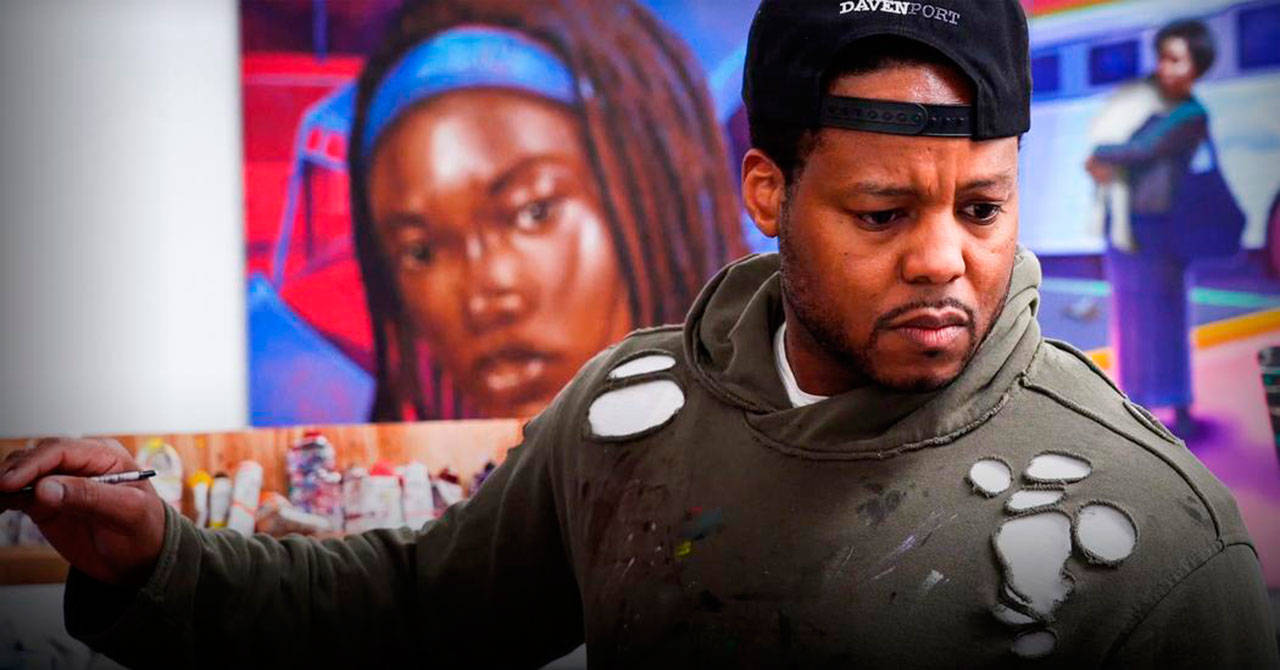By Susan McCabe
For Vashon Island School District
Since 1970, Americans have been celebrating Black History Month in February. Why February?
It is the birth month of two Americans whose lives were pivotal to ending slavery in the US – President Abraham Lincoln, author of the Emancipation Proclamation, born February 12, and Black abolitionist, author and orator Frederick Douglass, born February 14.
Historian Carter G. Woodson inaugurated Black History Week in 1924. The notion grew and, in 1976 the association Woodson founded facilitated the widespread institutionalization of February as Black History Month, and U.S. President Gerald Ford urged Americans to participate in its observance. Today, Black History Month is an undisputed part of the American calendar, but how much has it changed the lives of Black Americans?
In 2020 our children watched as the world learned about and protested police brutality against Black people. Those events amplified our collective exploration of the systemic racism of which police violence is one symptom, and our kids participated.
In February 2021, the Vashon Island School District (VISD) continues to evolve its study of Black American history as a way of helping youth children know more about the contributions of Black people throughout history. When white children know and respect people of color, they can become aware of their own participation in systemic racism and stop it.
Black History Month started Feb. 1 in all three schools, Chautauqua Elementary (CES), McMurray Middle School (McM) and Vashon High School (VHS). Activities have focused on racial equity and awareness culminate in the district’s Black Lives Matter Week of Action through Feb. 27. Probably the biggest challenge for teachers on Vashon is to illuminate different life experiences. Literature authored by people of color opens that door, but the work of creating empathy takes more.
This year, racial equity awareness started in kindergarten at CES. Local five-year-olds read Taye Diggs’ book Chocolate Me! then spent four days talking about racism and self-esteem, creating posters, comparing and contrasting characters in the book.
First- and second-graders read books about slavery, the civil rights movement and current events written by Black authors, then worked together to digest the information with discussions about equality, segregation, racism, and activism.
Margie Butcher’s third-graders focused on the BLM movement, its origins, the problems it addresses and whether protests have changed anything.
“We explored the concept of prejudice and made self-portraits of what we look like on the outside and how others might pre-judge us based on our gender, race, body,” said Butcher. ‘Then we mapped our hearts to show if people took the time to get to know us who they would find out we really are.”
Fourth and fifth-grade students at CES followed similar curricula – readings from Black authors and other people of color followed by discussions and artistic expression to deepen the experience.
Students at McMurray Middle School (McM) launched their five-week Black History Month celebration on Feb. 8 with stories from multiple voices.
“What stories people choose to tell and how they tell them is an essential expression of their humanity and an authentic record of their lived experiences,” said Greg Allison, McM principal.
McM teachers are using homeroom periods throughout the month to bring to students the lived experiences of Black American artists in “a rich mosaic of artistic forms: visual arts, dance, music, and writing … that spotlight not only racial injustice, but also dignity, joy, and hope.”
The five-week focus on Black artists’ voices and stories is essential to advancing awareness of and commitment to Black lives, past, present, and future. McM educators have researched particularly pointed literature and videos for the month, some of which offer rich perspectives for people of any age. For instance, a TED talk by Titus Kaphar, “Can Beauty Open Our Heart to Difficult Conversations?” points out how Black people have been ignored in Western art. McM students watch and read material curated by their teachers, then move into small group discussions.
At Vashon High School, students from the Racial Equity Pack (RAP) have been teaching their teachers all month with presentations and workshops focused on what it means to be an anti-racist educator.
Students are asking their teachers to be consistent in their curriculum choices, looking habitually for curricula that incorporate diverse perspectives.
“We learned that we are more willing to listen to our students of color and their experiences and to learn from it,” said Danny Rock, VHS principal. “We’ll get more from that than we will from listening to our peers. While we listen to and respect our peers, having our students tell us what they need is powerful.”
VHS faculty members have also committed to seeking diversity in curriculum content, including visuals that depict diverse populations and perspectives.
“We don’t want BLM Week of Action to be just one week,” said Assistant Principal Andrew Guss. “We will use Smart periods throughout the year to answer the call to create more opportunities for dialogue among students.”
Students from the Racial Equity Team are also working with faculty advisors to develop discussion guides for conversations in monthly Monday morning Smart periods.
Through those difficult conversations and all the exercises VISD students are working on this month, educators hope conversations spread to families and the island community to internalize the lived experiences of all people of color.
Black History tells us the uncomfortable truth of racism in America so we can begin to heal its wounds. In the words of Alicia Garza, co-founder of the international Black Lives Matter movement, “We want to see a world where Black lives matter in order for us to get to a world where all of our humanity is respected.”


